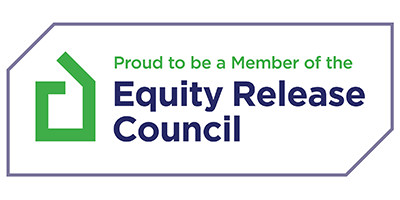In this article
If you’re planning to upgrade your home, remortgaging can be a popular way to raise the funds.
Whether you’re adding an extension, converting a loft, or modernising your kitchen, remortgaging allows you to access some of the equity built up in your property without having to move.
In this guide, we’ll look at how that equity is calculated, what lenders consider, and how the process works from start to finish.
Raising Money for Home Improvements
Explained in 2 mins 15 seconds
Find more videos like this on MoneymanTV
How Lenders Look at Equity and Borrowing
To work out how much you might be able to borrow, a lender will first look at the equity in your home. This is the difference between what your property is worth and what’s still left to pay on your mortgage.
The more equity you’ve built up, the more borrowing power you’re likely to have. Lenders use this information to decide how much extra they’re willing to offer and at what rate.
They’ll also look at what you’re using the money for, and whether the improvements are likely to add value to the property.
Every lender has their own criteria, but there are a few general things that tend to apply:
- If you’re borrowing a higher percentage of your home’s value, the interest rate is likely to be higher
- You’ll need to show that the new monthly payments are affordable based on your income and outgoings
- For larger or structural projects, lenders often ask to see estimates or quotes for the work before releasing any additional funds
This stage helps set expectations and gives you a clearer picture of what might be possible based on your property and your finances.
Advantages of Remortgaging for Home Improvements
Remortgaging can be an effective way to access funds for improving your home, especially if you’ve built up equity over time and are happy where you live.
It’s a route that many homeowners take when they want to adapt their space without the cost and disruption of moving house.
Some of the most common advantages include:
- Releasing built-up equity without having to sell or move
- Access to lower interest rates compared to unsecured borrowing
- The potential to increase your property’s value, especially with structural or layout improvements
- Avoiding the costs of moving, such as legal fees, stamp duty, and estate agency charges
- Keeping your family in the same area, close to schools, work, and community
For those who feel their current property has the potential to meet their future needs, this approach can be a practical and financially sensible alternative to relocating.
Planning Ahead for a Home Improvement Remortgage
Before going ahead with a remortgage for home improvements, it’s worth thinking through the project in full.
Once your new mortgage is in place, it may be more difficult to borrow again quickly, so it helps to be as thorough as possible from the outset.
If your plans are extensive, it’s sensible to gather costed estimates, even if they are only to support your mortgage application.
Most lenders will want to understand what the funds will be used for, particularly if you’re borrowing a significant amount above your existing balance.
Running out of funds partway through a project is one of the most common issues people face, so it’s important to include a buffer in your budgeting.
Small price changes or unexpected delays can affect timelines, and a little contingency can go a long way in helping things run more smoothly.
How the Process Typically Works
If you’re planning to remortgage to fund improvements, your mortgage broker will guide you through the steps.
After reviewing your current position and looking at how much equity you’ve built, they’ll assess how much you could borrow and which lenders are open to this type of application.
Once you’ve chosen the right deal, the next step is to provide supporting documents. These usually include payslips, bank statements, identification, and information about the work you plan to carry out.
A valuation may be arranged by the lender to confirm the current value of your home. If everything is approved, your new mortgage replaces the old one, and the additional funds are released.
It’s important to stay in regular contact during this time to make sure nothing is missed and the process moves smoothly.
Speak to an Advisor – It’s Free!
Schedule a free callback from one of our experts today.
- All situations considered
- Transparent and honest mortgage advice
- We search 1000s of purchase and remortgage deals
Our customers rate us 4.9/5
What Else Should You Consider?
Before going ahead, it’s worth thinking about how your improvement plans fit into the bigger picture. If your current mortgage deal is ending soon, it may be the right time to explore your options.
If you’re tied into a deal with early repayment charges, we’ll help you weigh up whether a further advance, secured loan or alternative product could work better.
How long you plan to stay in your home, and whether the changes are about adding value or simply making the space work better for your family, can both shape the right approach.
We’ll talk through this with you, so you’re clear on how the decision fits with your future plans, not just your current circumstances.
Timing is something else to think about. If the work is urgent, we’ll aim to find a lender who can support your timescale. If it’s more flexible, it might be worth waiting until you’re in a stronger position to borrow.
At UK Moneyman, we’ve helped many homeowners through this process, and we’ll always look at the wider picture to help you move forward with confidence.







